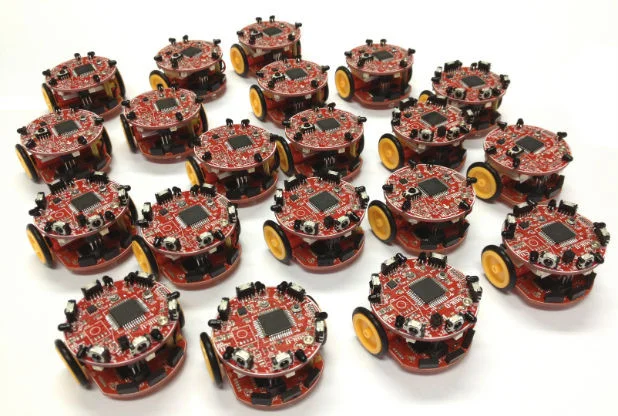University Of Lincoln Students Create 'Honeybee' Robots To Replicate Swarm Behaviour
Computer scientists at the University of Lincoln have created an autonomous robot, which can replicate the behaviour of swarming honeybees in large numbers. Called Colias - named after a type of butterfly - they can be used for insight into how swarms act amongst each other.
Created in partnership with Tsinhua University in China, these robots (4cm diameter) can move with fast motion (35cm/s) to autonomously simulate nature, taking inspiration from swarms: a hot topic of insight for robotics reserachers across the globe. The platform imitates swarm behaviours found in such creatures as insects, birds and fish, and the aim of creating this is simple: find technological solutions to the complex-yet-common tasks.
Due to the complexities and cost of creating these kinds of robotics, this research has been limited to software simulation, but through Colias (costing roughly £25 per robot) this replication of swarm behaviour in large numbers of robots is now a feasible and economical route.
"Colias has been used in a bio-inspired scenario, showing that it is extremely responsive to being used to investigate collective behaviours." Farshar Arvin, from the School of Computer Science research team sair. "Our aim was to imitate the bio-inspired mechanisms of swarm robots and to enable all research groups, even with limited funding, to perform such research with real robots."
Using long-range infared proximity sensors paired with three short-range sensors, the robots can communicate with their direct neighbours and detect obstacles to avoid. A similar but more complex mechanism can be found in an insect's eyes, as they have a specific neuron for detecting movement, much like Colias.
So where does this go next? The team plan to extend their work with faster computer processors to improve their bio-inspired vision mechanisms, as they continue striving towards finding solutions to complex human problems through robotic swarms.


